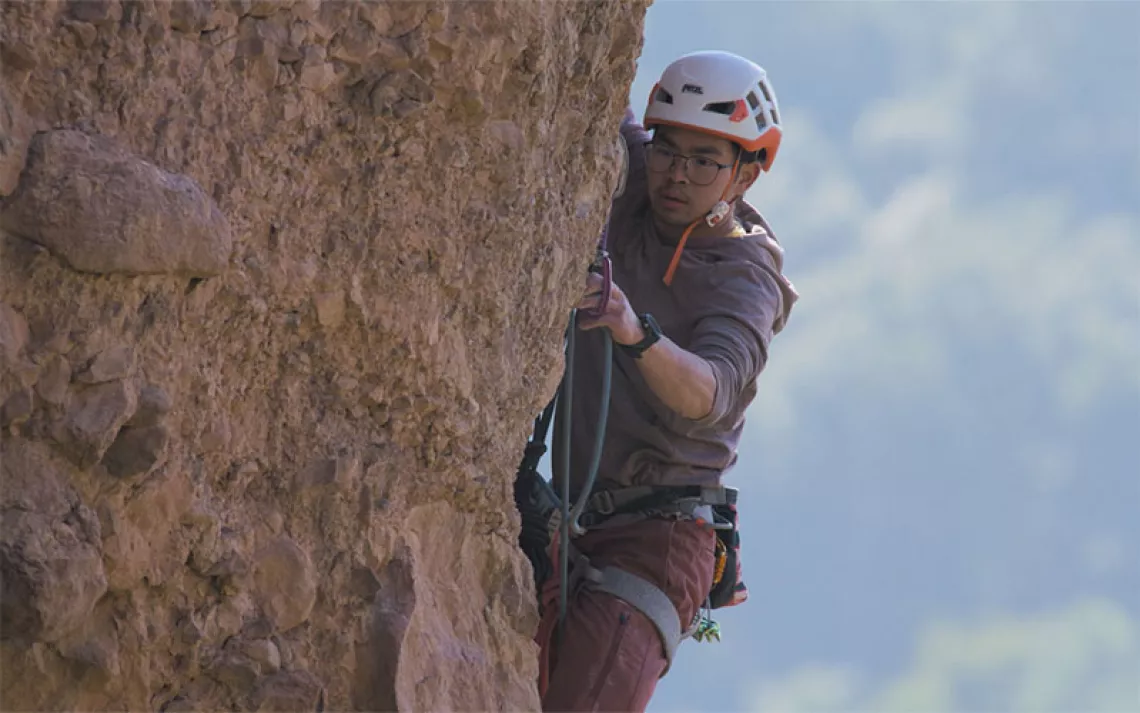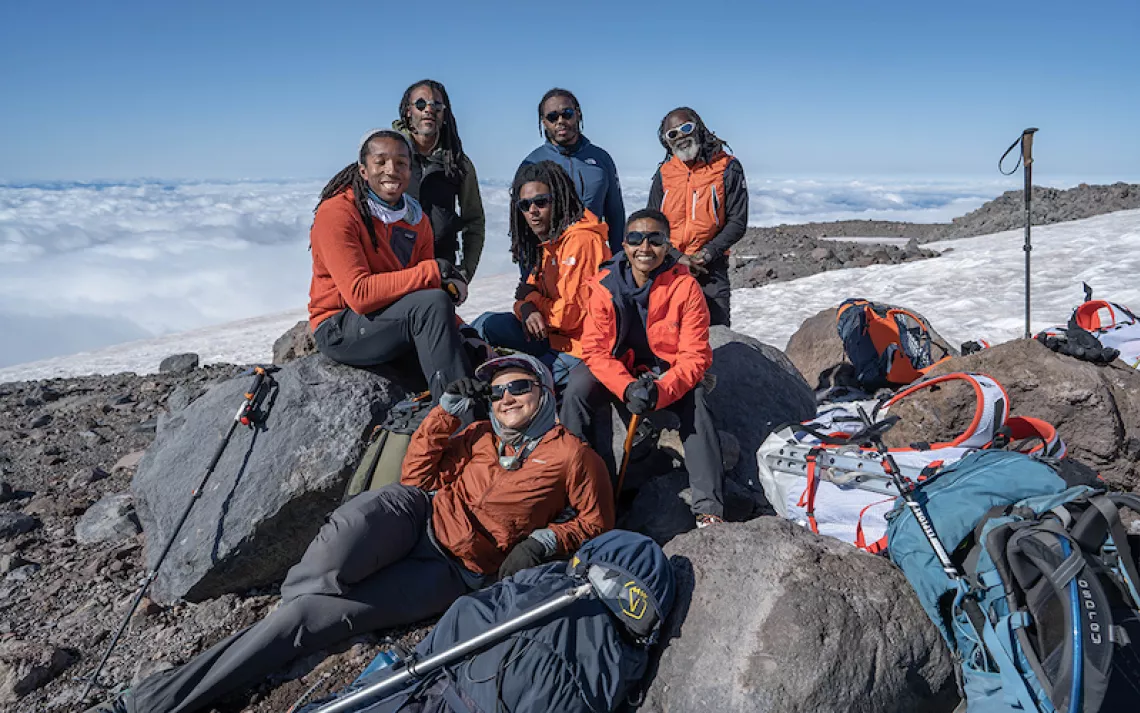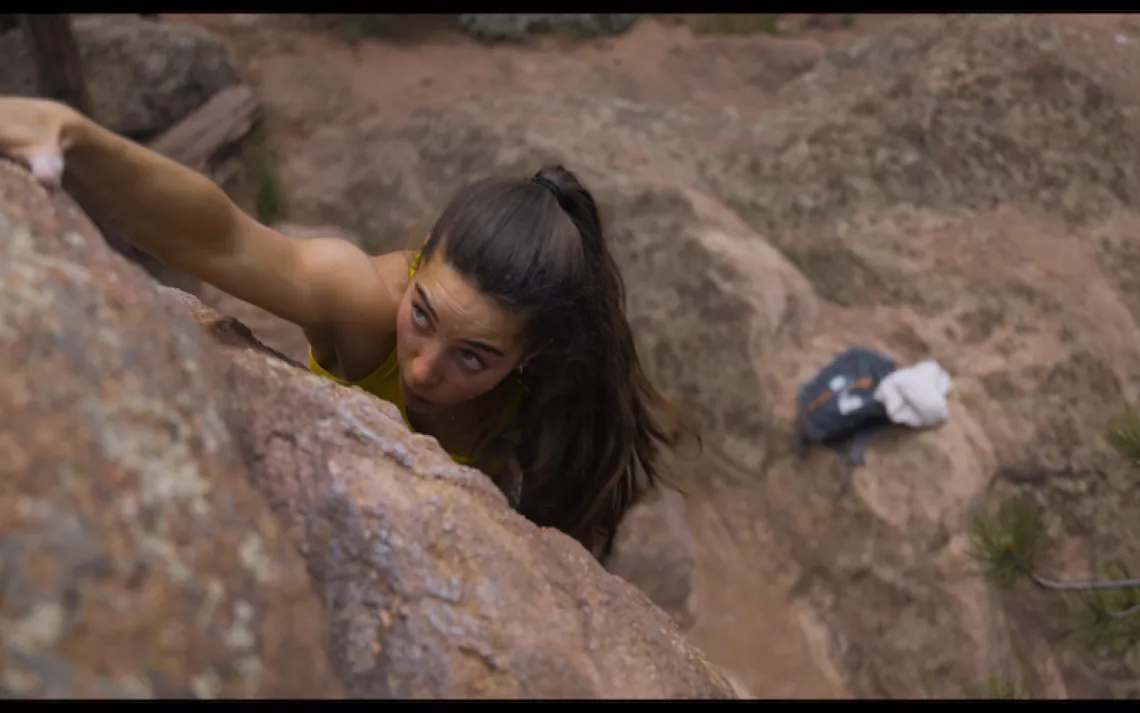Royal Robbins, Renowned Rock Climber, Environmentalist Dies at 82
A principled pioneer of the vertical and natural world

Photos courtesy of royalrobbins.com
“True conquest was not of the physical mountains rising from the surface of our planet, but rather of the inner mountains of the soul,” the legendary rock climber Royal Robbins once wrote. “Those were the mountains worth conquering.”
Robbins, a pioneer of modern rock-climbing techniques, passed away last Tuesday, March 14, at his home in Modesto, California. He was 82 years old.
Robbins was one of the icons of Yosemite’s "Golden Age"—the period during the 1950s and 1960s when rock climbers squatted in Yosemite Valley and pushed the frontiers of their sport on the granite walls surrounding them.
In 1957, Robbins made the first ascent of Half Dome’s Northwest Face. It was the first class-VI climb in the United States (a rating that denotes a technically difficult, multiday climb). His other notable first ascents include El Capitan’s Salathé Wall in 1961, Chamonix’s Aiguille du Dru’s American Direct in 1962, and Yosemite’s Nutcracker in 1967.
But for Robbins, completing a bucket list of climbs wasn't the point. “Just getting up a route is nothing,” he wrote in Advanced Rockcraft, his influential 1973 how-to book. “The way it is done is everything.”
Known at the time as a purist, Robbins climbed in a minimalist style, emphasizing the sport’s spirituality while lessening its impact on the natural environment.
When Robbins arrived in Yosemite in the early 1950s, most climbs were done with fixed ropes. According to Steve Roper’s history of the period, Camp 4, Robbins “believed that fixed-rope climbing lacked adventure. Given enough time, any determined climber, however competent, could manage to commute up and down an umbilical cord that stretched from ground to high point. In short, Robbins believed in commitment.”
In 1960, Robbins repeated El Capitan’s Nose, first climbed by a competitor, Warren Harding. (Though both gifted athletes, the two were adversaries largely because of their different ethics; in contrast to Robbins’s stripped-down style, Harding liberally bolted routes). After seven strenuous days on the wall, Robbins and his team achieved the route’s second ascent—without the fixed ropes Harding had employed in the first ascent. Harding was displeased. However, he eventually also quit fixed-roped climbing.
 As rock climbing’s popularity grew, Robbins realized the need for what he called a “new consciousness.” He ditched bolts and pitons—the metal spikes climbers once hammered into rock faces—and pushed the community toward “clean climbing.” This method, revolutionary in the 1960s, minimizes rock damage by using removable gearlike chocks and nuts, and nowadays, spring-loaded devices. When Robbins and his wife, Liz (a talented climber in her own right), made the first ascent of Nutcracker in 1967, they used only nuts for protection. It was the first climb to be done in such a style.
As rock climbing’s popularity grew, Robbins realized the need for what he called a “new consciousness.” He ditched bolts and pitons—the metal spikes climbers once hammered into rock faces—and pushed the community toward “clean climbing.” This method, revolutionary in the 1960s, minimizes rock damage by using removable gearlike chocks and nuts, and nowadays, spring-loaded devices. When Robbins and his wife, Liz (a talented climber in her own right), made the first ascent of Nutcracker in 1967, they used only nuts for protection. It was the first climb to be done in such a style.
“What a pleasure to climb a fine route and find no traces of those who have come before and to leave no mark of one’s passage,” Robbins wrote. “What a pleasure to climb the quiet way—without hammering—to use art instead of force.”
With this calm conviction, Robbins opened a new chapter of environmentalism within rock climbing. His best-selling manuals, Basic Rockcraft (1971) and Advanced Rockcraft (1973), offered climbers then-scarce literature on technical skills, equipment, low-impact practices, and his own personal philosophies around the art of the sport. He also regularly contributed to the Sierra Club Bulletin, Ascent, and Summit magazines, and in the 2000s, published three volumes of memoirs. His well-crafted writing mimicked his deftness on the rock.
In 1968, Robbins and Liz—inspired by the haggard fashion of their climbing comrades—started an athletic lifestyle clothing line in his name. The company continues today with a “lead, don’t follow” approach to environmental and social responsibility, which company executives call “Royalism.”
“Royal was a legendary pioneer who approached everything in life with a true spirit of adventure,” said Michael Millenacker, CEO of Royal Robbins. “With tremendous class and a huge heart, he taught me so many valuable lessons about conviction and grit.”
Arthritis stymied Robbins's climbing in the late 1970s. But though he couldn’t grip rock, he could grip a paddle, and as a kayaker, he notched several first river descents that only a climbing career as prolific as his own could overshadow. Robbins, whitewater guru Reg Lake, and The North Face cofounder Doug Tompkins formed a paddling trio they dubbed the “Billy Goat Crew.” In 1980, the crew completed the Triple Crown, a remote, technically demanding run of three affluents within the San Joaquin River.
It was just another feat in which Robbins combined exceptional athleticism with an abiding love of wildness. Jerry Gallwas, who first climbed the northwest face of Half Dome with Robbins in 1957, described him as having “the genetic combination of John Muir’s spiritual appreciation of nature and the passion of an Olympic gold medalist.”
Yet even with a wealth of achievements beneath him, Robbins maintained his down-to-earth mentality. When an interviewer once referred to him and his Yosemite cohort as “demigods” of the sport, Robbins shrugged and called the term “embarrassing.”
“We were just ordinary people who were in love with climbing,” he said.
 The Magazine of The Sierra Club
The Magazine of The Sierra Club



